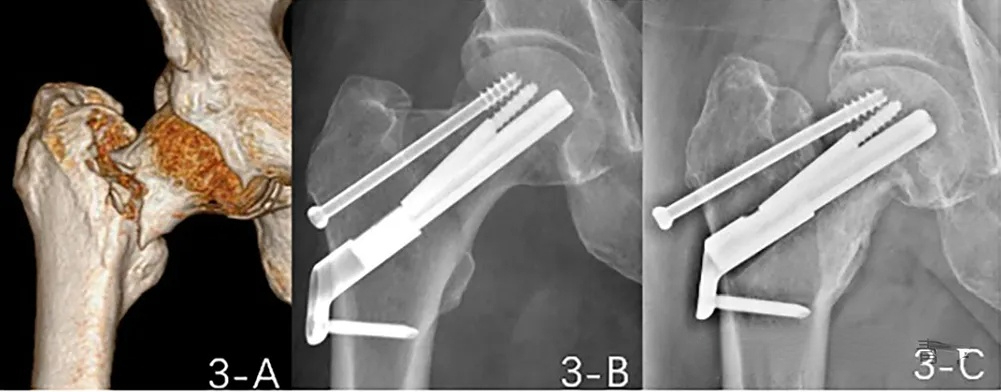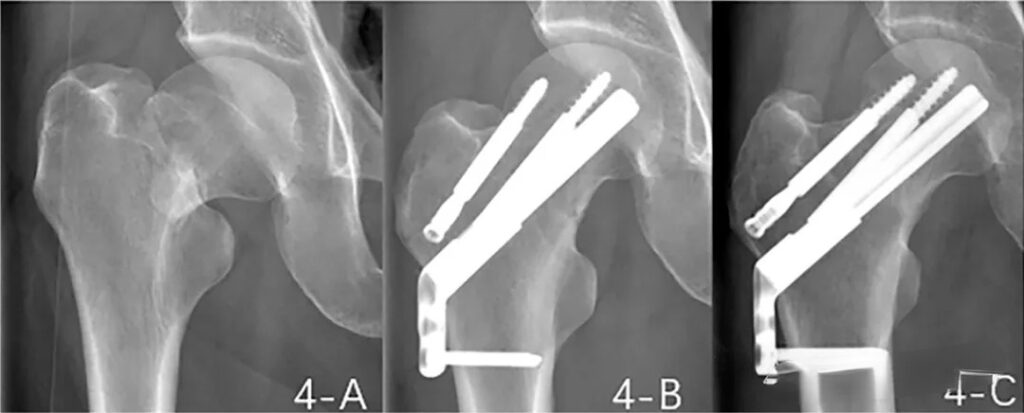Femoral neck fractures account for 50% of hip fractures. Internal fixation is usually recommended for non-elderly patients with femoral neck fractures, but complications after internal fixation, such as nonunion, femoral head necrosis, and femoral neck shortening, are very common in clinical practice. Currently, many literature studies have focused on how to avoid necrosis after internal fixation of femoral neck fractures, but less attention has been paid to the issue of femoral neck shortening.

At present, the methods of femoral neck internal fixation, including three hollow screw fixation, FNS, dynamic hip screws, etc., are all aimed at avoiding femoral neck varus and providing axial compression to avoid bone nonunion. However, uncontrollable or excessive sliding compression will inevitably cause femoral neck shortening. For this reason, experts from the Second People’s Hospital Affiliated to Fujian University of Traditional Chinese Medicine, considering the importance of femoral neck length in femoral neck healing and hip function, proposed the use of “anti-shortening screws” combined with FNS internal fixation of femoral neck fractures, and achieved good results. The study was published in the latest “Orthopaedic Surgery” journal:

There are two types of “anti-shortening screws” shown in the article, one is a common hollow screw and the other is a screw with a double-thread design. And among the 53 cases of the anti-shortening screw group, only 4 cases used double-threaded screws, which makes us wonder whether the hollow part of the thread has an anti-shortening effect?

Statistical analysis of hollow partially threaded screws and double-threaded screws was performed together with traditional FNS internal fixation. It can be concluded that the degree of shortening in the anti-shortening screw group at the follow-up cutoff points of 1 month, 3 months, and 1 year after surgery was significantly lower. It was significantly lower than that of the traditional FNS group, and there was a statistical difference. So, is it the function of ordinary cannulated screws or the function of double-threaded screws?
The article lists 5 cases of anti-shortening screw cases. It can be found that the second and third cases were fixed with ordinary hollow partially threaded screws, and there was more obvious screw withdrawal and shortening (the same number in the picture below is the same case) :





According to the case diagram, we can intuitively feel the use of double-threaded screws in anti-shortening. As for cannulated screws, they are not grouped and compared separately in the article, but the article provides a direction for thinking about femoral neck internal fixation, that is, paying attention to maintaining the length of the femoral neck.
Disclaimer:
This article and all articles on this website are for reference only by medical professionals; specific medical problems should be treated promptly. To ensure “originality” and improve delivery efficiency, some articles on this website are AI-generated and machine-translated, which may be inappropriate or even wrong. Please refer to the original English text or leave a message if necessary. Copyright belongs to the original author. If your rights are violated, please contact the backstage to delete them. If you have any questions, please leave a message through the backstage, or leave a message below this article. Thank you!
Like and share, your hands will be left with the fragrance!




